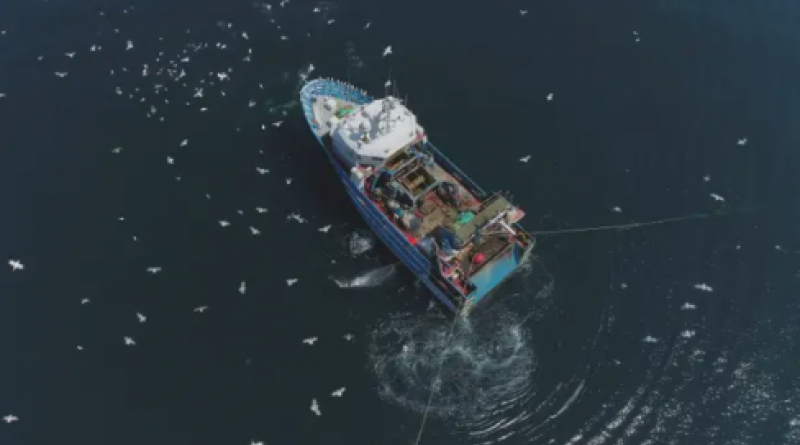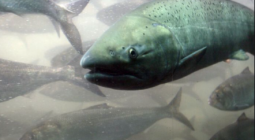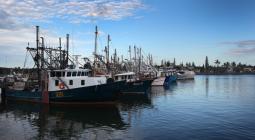Damaging ‘fly-shooting’ fishing in Channel sparks concerns

Small-scale fishers say mostly EU fleet is devastating catches with method that nets entire shoals of fish.
The UK has been accused of allowing a fleet of mainly EU “fly-shooting” fishing boats “unfettered access” to the Channel, without a proper assessment of the impact on fish populations, the seabed or the livelihoods of small-scale fishers.
Organisations representing small-scale fishers on both sides of the Channel have warned that the fleet is having a “devastating” effect on their catches. They are calling for a review of the vessels’ UK licences until an impact assessment has been carried out.
Fly-shooter fishing boats, sometimes called Danish or Scottish seiners, tow lead-weighted ropes along the seabed at either end of a net that encircles and captures entire shoals of fish.
Fly shooters can catch up to 11 times more fish than inshore fishing vessels

Victoria Prentis, the environment minister, said in response to a parliamentary question this month that fly shooters had a lower environmental impact than other gear types because they could be operated from lower-powered vessels with lower fuel consumption.
Caroline Lucas, the Green party MP, described this assessment as “not good enough”.

One expert told the Guardian that fly shooters had “killing power” estimated at four to 11 times as much as that of inshore fishing boats.
Currently, at least 75 vessels use this fishing method in the Channel, up from a handful years ago.
Jeremy Percy, director of Low Impact Fishers of Europe (Life), accused the government of allowing “unfettered access” to fly shooters at the expense of the under-10 metre fishing fleet, which he said had been “hanging on by its fingernails for years”.
“We’re being told by our fishermen that it’s pointless going to sea when these boats have been through, because there’s nothing left,” Percy said.
In a letter to the Department for Environment, Food and Rural Affairs, Percy said: “From the increase in reports from coastal fishermen on both sides of the English Channel of the impacts of the use of the Danish seine, there is no doubt that the method is having a devastating effect and not least on non-quota stocks.”
These stocks, of species such as bass and mullet, were “vital” to the under-10 metre and non-sector fishermen (those outside the large co-operative “producer organisations”), who have become increasingly reliant on them, “largely due to restrictive government policies”, he said.
Years of restrictions, unfair quota allocations and the news, since Brexit, that foreign vessels with a track record would be allowed into the six to 12-mile inshore zone, despite promises that UK boats would have exclusive access up to 12 miles, have left inshore fishers in crisis, they say.
EU vessels using electric pulse fishing, another controversial fishing method, were banned from UK waters this year, after years of lobbying by inshore fishers. The under-10-metre fishers say the battle against fly-shooters is history repeating itself.
Fifteen of the 75 vessels are UK registered and licensed; the rest are French, Belgian and Dutch. EU boats fishing in British waters have to be licensed by the UK’s Marine Management Organisation (MMO), but they are not specific to gear type.
Lucas said: “Defra have clearly dropped the ball on this damaging form of fishing, issuing licences without a proper assessment of the damage fly shooting is causing to stocks and the seabed. It’s just not good enough for the minister to say that it’s acceptable because it has a lower environmental impact as it’s carried out by smaller vessels.
“The government has committed to protecting 30% of land and sea for nature by 2030 and it needs to take urgent action on this, or there will be no sea life left to protect,” she told the Guardian.
Brian O’Riordan, deputy director of Life, which represents 10,000 fishers from the Baltic to the Mediterranean Sea, said: “They shouldn’t be given carte blanche to fish in an area where the small-scale sector is struggling to make a living, with a question mark over sustainability.”
Michel Kaiser, professor of fisheries conservation at Edinburgh’s Heriot-Watt University, estimates that a fly shooter can achieve the same fishing capacity as between four and 11 smaller boats an hour. This is based on a fly shooter covering 1m sq metres of seabed on each fishing trip, compared to a smaller otter trawler, which would cover 231,500 sq metres, or 92,600 sq metres an hour, he said.
“The killing power of one boat is much higher than [that of] lots of little boats,” Kaiser said. “It comes down to a socioeconomic issue: the promotion of one large vessel against 11 smaller ones.”
The Guardian asked the MMO whether it had conducted an impact assessment of the fleet and how many boats were licensed in the UK. It said 15 UK-registered and licensed vessels had engaged in fly seining in the Channel and the North Sea between 2011 and 2021. It did not respond to the query about impact assessment.
It added: “The MMO Single Issuing Authority grants licences to EU vessels to fish in UK waters provided they have a track record in accordance with the [EU-UK] trade and cooperation agreement (TCA). These licences are not specific to gear type and vessels engaged in fly seining may also deploy other gear types.”
A Defra spokesperson said: “We are considering the potential effects of fly-shooting fishing gear used by vessels in UK waters, and have been discussing this with different sectors of the industry. Any future decisions on the use of this, or any other gear, will be based on the best available evidence.”
28 June 2021
The Guardian




